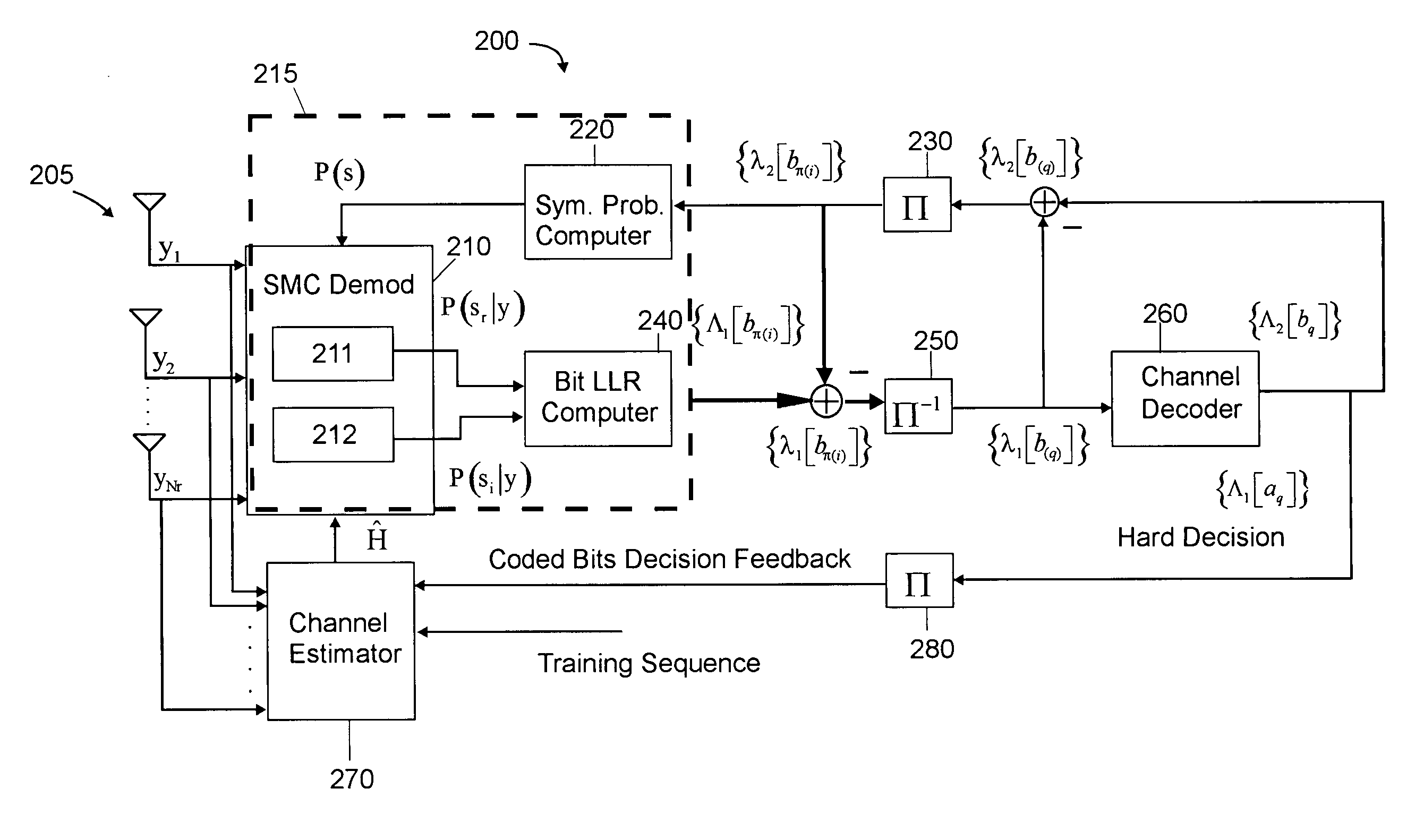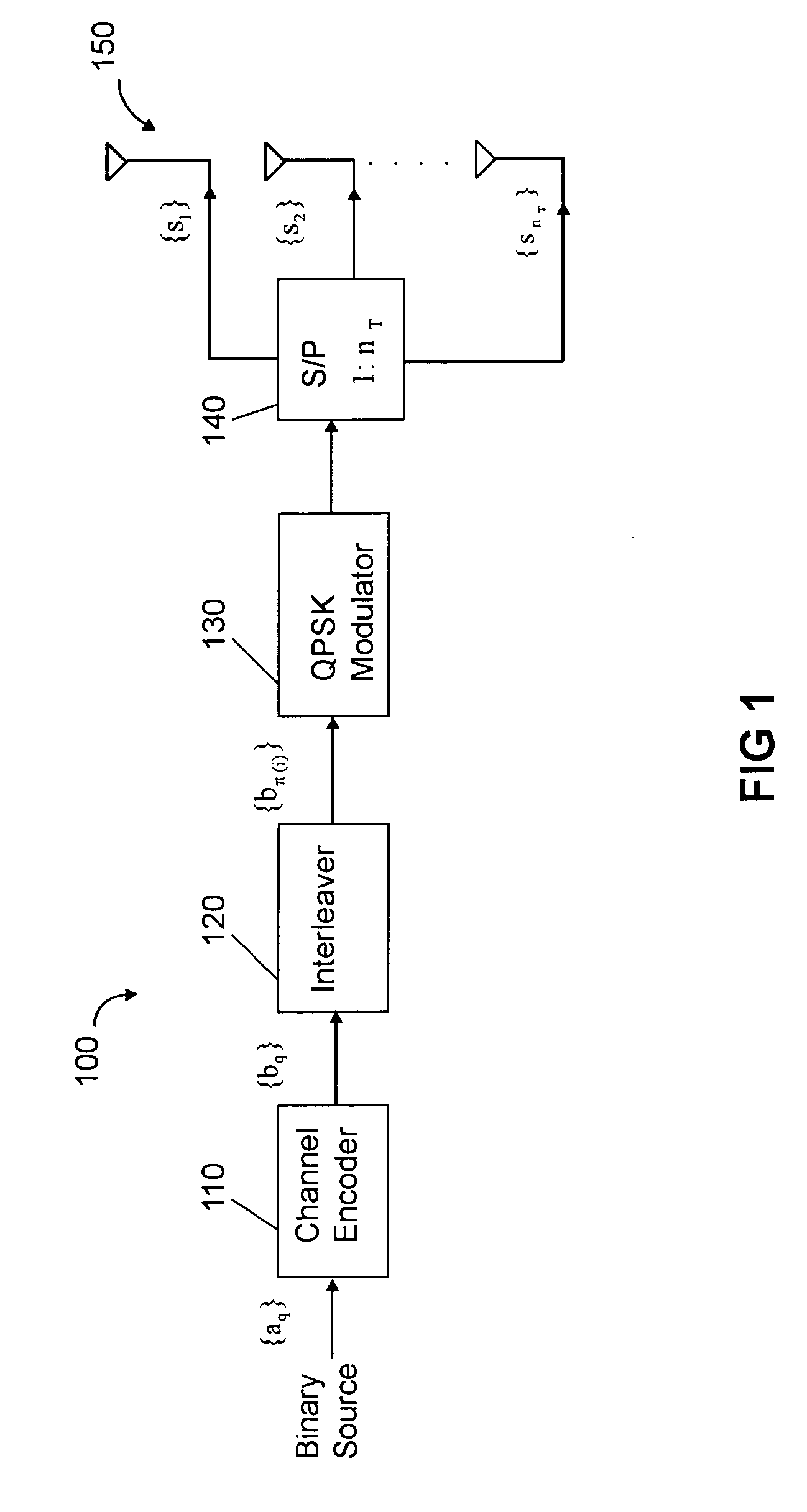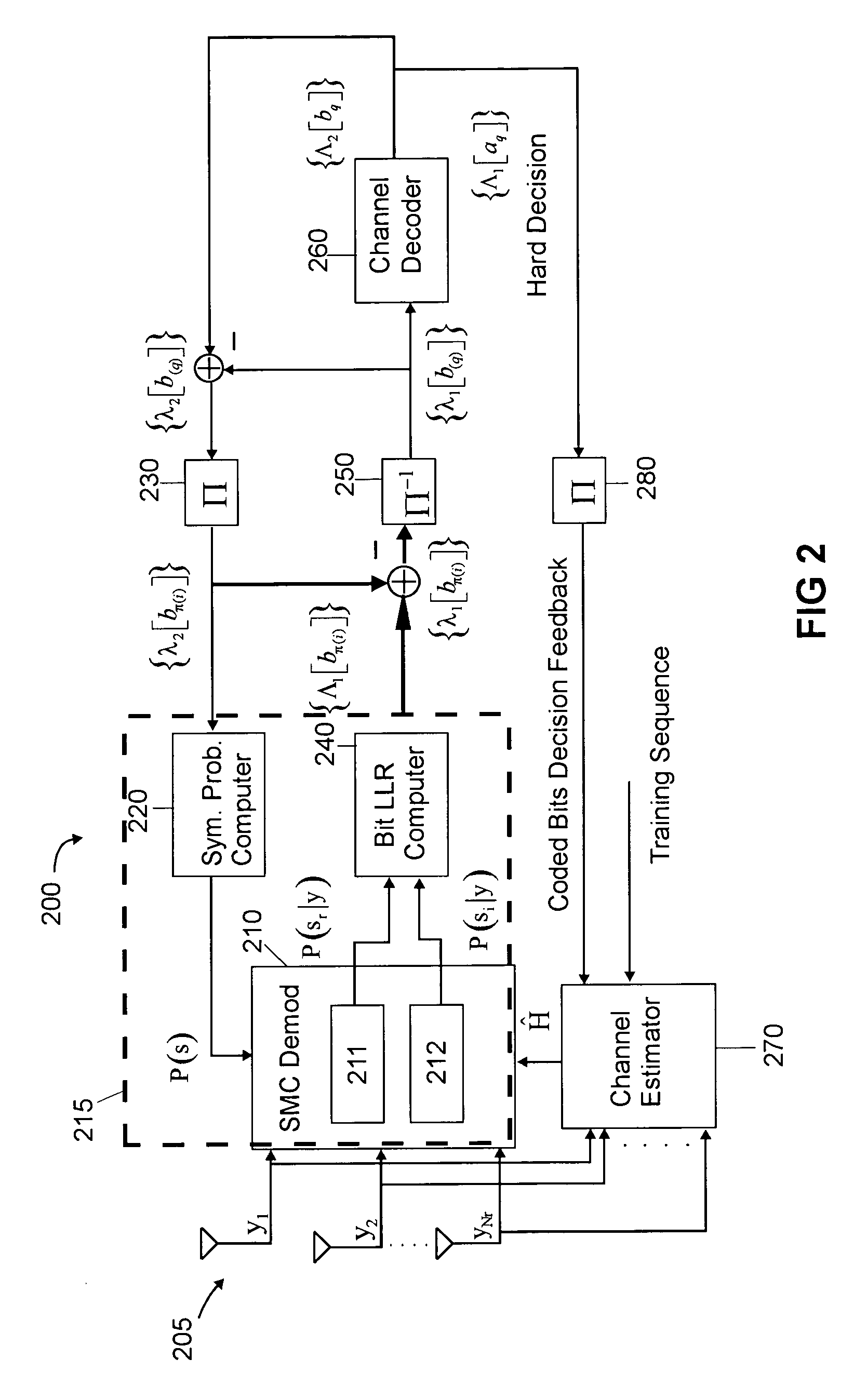Reduced-complexity multiple-input multiple-output (MIMO) channel detection via sequential Monte Carlo
a multi-output, multi-input technology, applied in the direction of amplitude demodulation, line-fault/interference reduction, pulse technique, etc., can solve the problem of hard decision algorithms which suffer performance loss, complexity which grows exponentially in terms of transmit antennas, and the inability to detect simple detection strategies. problem, to achieve the effect of reducing computational complexity and reducing the number of possible symbol candidates
- Summary
- Abstract
- Description
- Claims
- Application Information
AI Technical Summary
Benefits of technology
Problems solved by technology
Method used
Image
Examples
Embodiment Construction
[0015]FIG. 1 and FIG. 2 illustrate a generic multiple-input multiple-output (MIMO) system suitable for practice of an embodiment of the present invention. FIG. 1 shows an example transmitter structure 100 and FIG. 2 shows an example receiver structure 200.
[0016] It is assumed, without limitation, that the MIMO system has nT transmit and nR receive antennas with nR≧nT. The wireless channel, without limitation, is assumed to have rich-scattering and flat fading. The fading betveen each transmit and receive antenna pair is assumed to be independent. The channel is also assumed, without limitation, to be quasi-static, i.e., it is static over a data burst and changes from burst to burst.
[0017] At the transmitter 100, blocks of information bits {al} are encoded into code bits {bi} at a channel encoder 110. The code bits can be randomly interleaved at an interleaver 120 and mapped to values from a finite alphabet set A={a1, a2, . . . , aM}, for example, to an M-PSK or M-QAM modulation sy...
PUM
 Login to View More
Login to View More Abstract
Description
Claims
Application Information
 Login to View More
Login to View More - Generate Ideas
- Intellectual Property
- Life Sciences
- Materials
- Tech Scout
- Unparalleled Data Quality
- Higher Quality Content
- 60% Fewer Hallucinations
Browse by: Latest US Patents, China's latest patents, Technical Efficacy Thesaurus, Application Domain, Technology Topic, Popular Technical Reports.
© 2025 PatSnap. All rights reserved.Legal|Privacy policy|Modern Slavery Act Transparency Statement|Sitemap|About US| Contact US: help@patsnap.com



